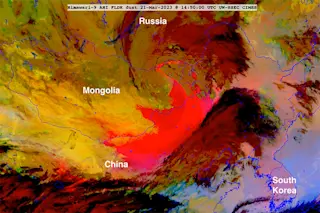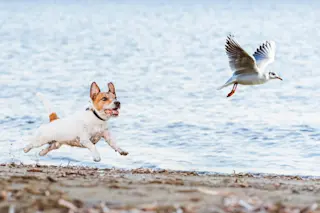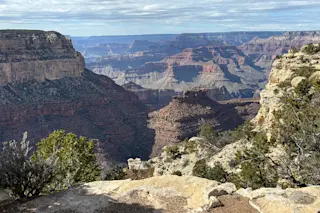Were it not for the labels and national borders, the image above might easily be mistaken for an abstract expressionist painting. But it is, in fact, a satellite image that reveals a sprawling dust storm over Asia.
The storm arose as tightly juxtaposed areas of high and low atmospheric pressure generated strong winds that lofted massive amounts of dust over Mongolia. The comma-shaped low-pressure system then whisked the dust all the way into northeastern China. In the image above, and the timelapse animation below, the dust shows up in shades of bright magenta and pink.
As the dust storm moved into eastern China on March 22, visibility plummeted in Beijing, and air quality sensors there revealed soaring levels of particulate matter. In total, the dust affected more than 560 million people.
The luminescent colors and swirling patterns in the satellite views demonstrate how imagery at the intersection of science and ...














